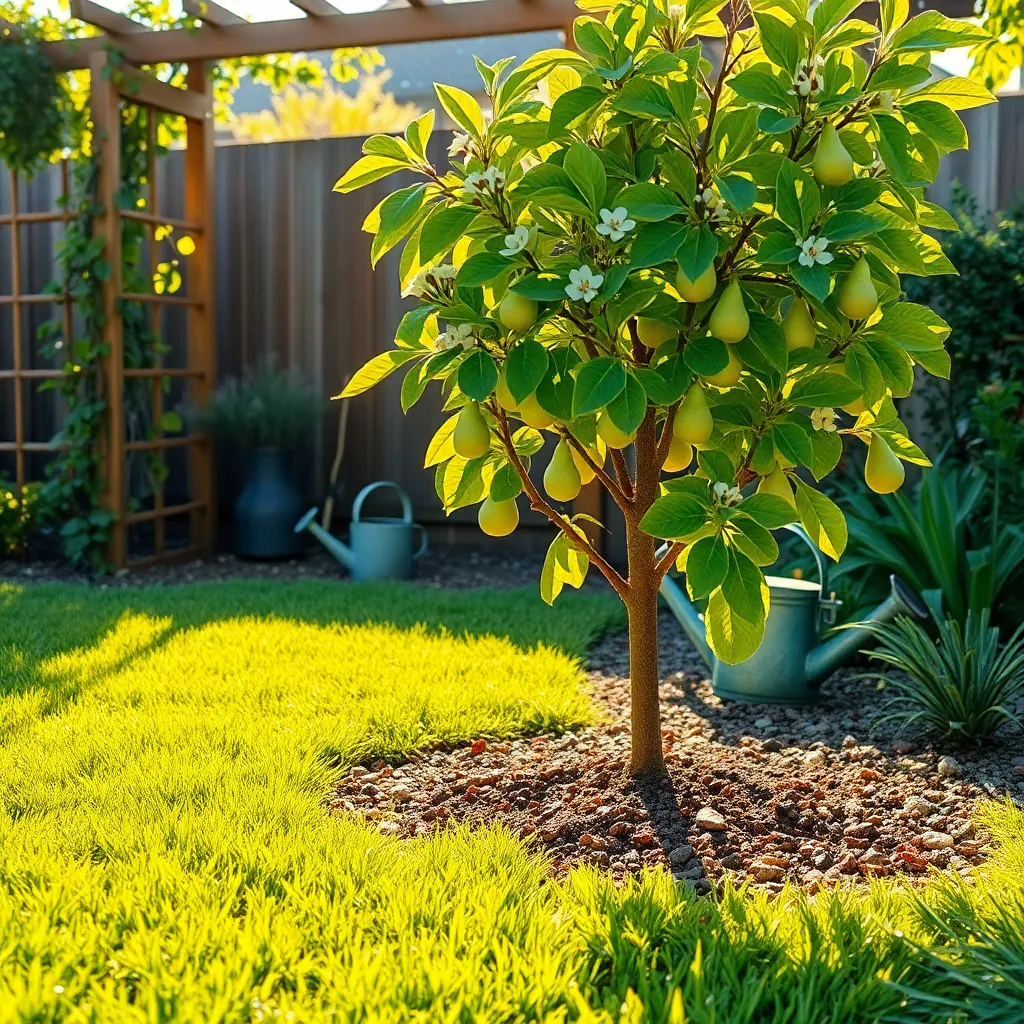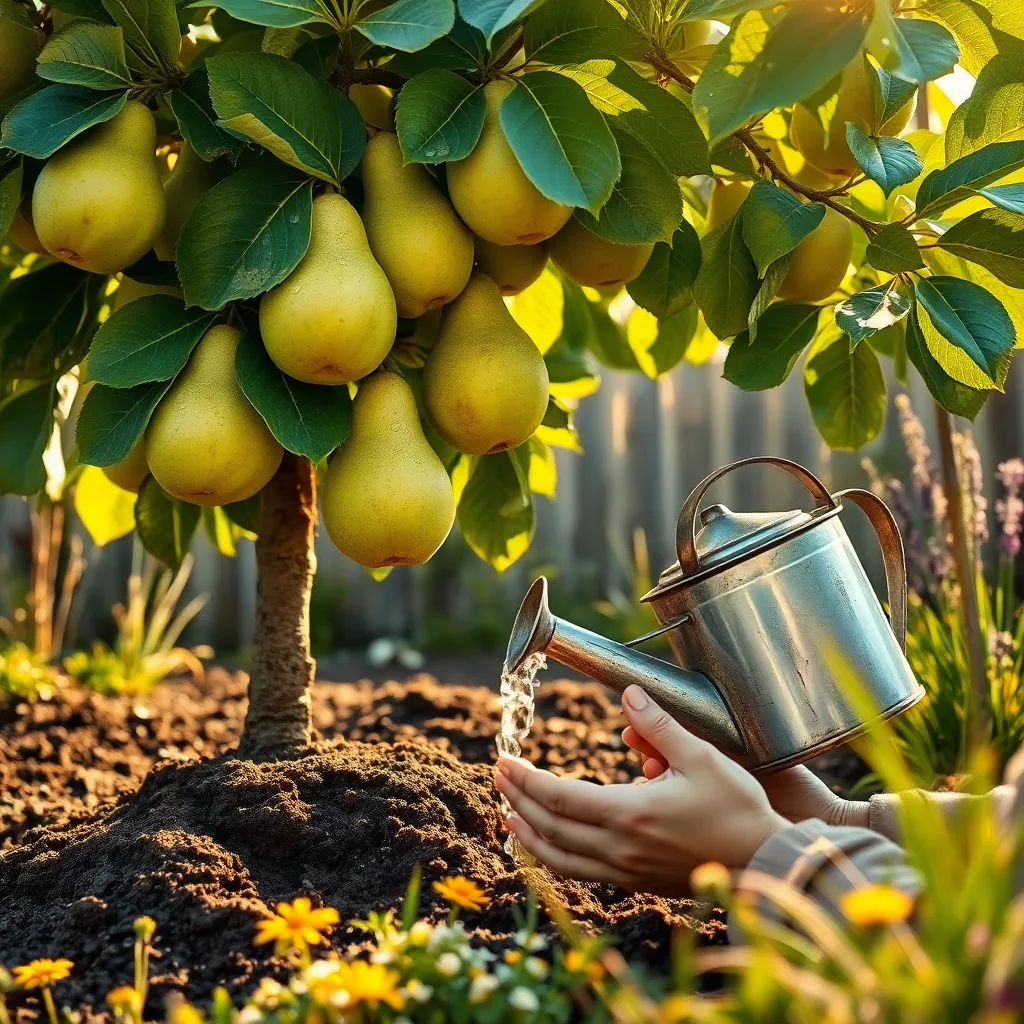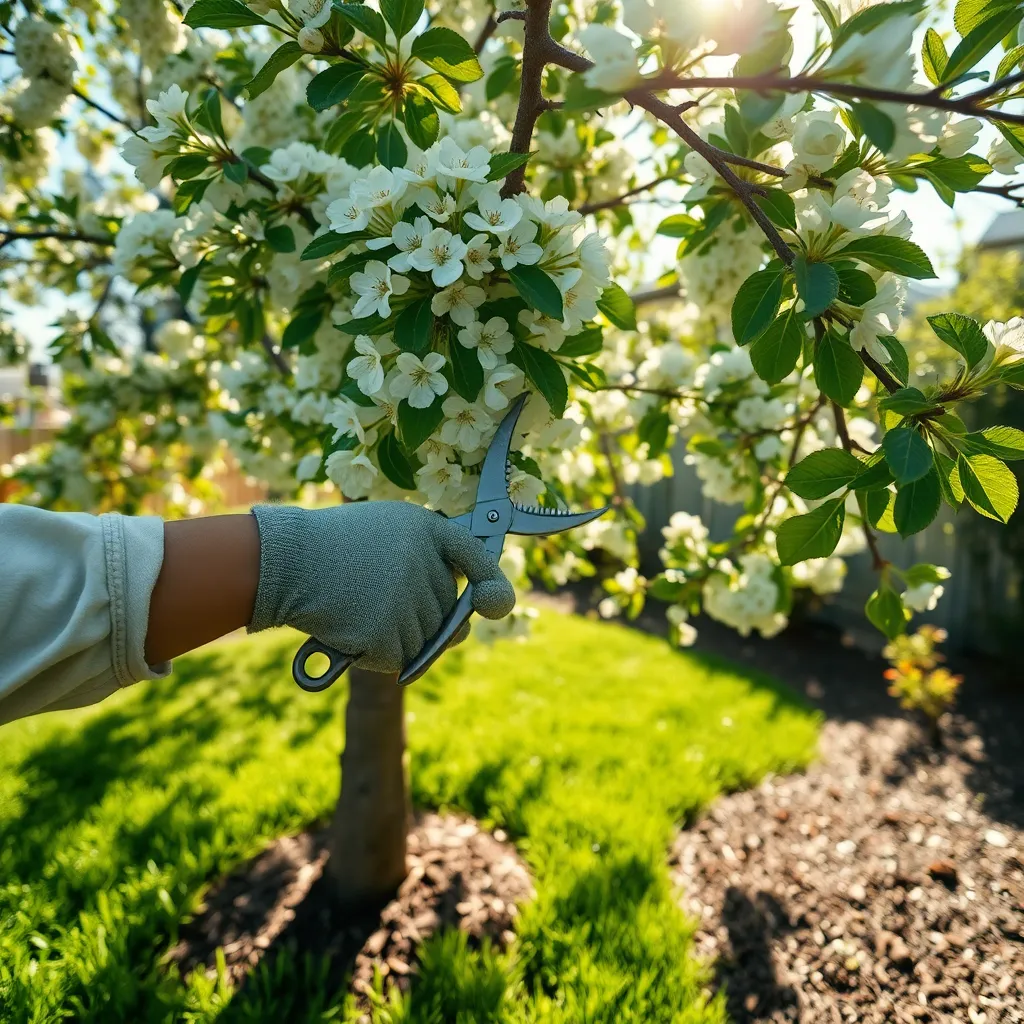Imagine stepping into your backyard and plucking a perfectly ripe pear from your very own tree, the sweet aroma filling the air as you take a bite of its juicy flesh. Growing pears in your backyard is not just a rewarding endeavor; it’s an invitation to enjoy one of nature’s most delightful fruits right at your doorstep. Whether you’re a seasoned gardener or just starting with your first spade, cultivating pears offers a unique blend of simplicity and satisfaction, turning any outdoor space into an orchard of abundance.
Pears have been cherished for centuries, not only for their delectable taste but also for their remarkable adaptability in various climates. This article will guide you through the journey of growing pears, from selecting the right variety to ensuring a bountiful harvest. You’ll learn the secrets of choosing the perfect spot, the art of planting, and the nuances of daily care that will help your pear trees thrive. By the end, you’ll be equipped with the knowledge and confidence to nurture your own slice of paradise, complete with the promise of delicious, homegrown pears.
For those who have already dipped their toes into the world of gardening, you’ll find advanced tips to maximize yield and maintain tree health. Meanwhile, beginners will appreciate the straightforward steps that demystify the process, making pear cultivation an achievable goal. Regardless of your experience level, this guide is crafted to empower you with practical insights and a sense of accomplishment as you watch your pear trees flourish. Join us in this fruitful adventure, and soon enough, you’ll be celebrating the sweet rewards of your labor right in your own backyard.
Select Suitable Pear Tree Variety

Choosing the right pear tree variety for your backyard is crucial for ensuring a successful harvest. Consider the climate in your area, as some varieties perform better in certain temperature ranges.
‘Bartlett’ pears are a popular choice for many gardeners due to their delicious flavor and adaptability. However, they require a cold winter chill to produce fruit, so they are best suited for regions with colder winters.
If you live in a warmer climate, consider varieties like ‘Kieffer’ or ‘Hood’, which are more tolerant of heat. These varieties also tend to be more resistant to common pear diseases, making them a reliable choice for beginners.
It’s essential to ensure your chosen variety has compatible pollinators nearby, as most pear trees are not self-pollinating. Planting two different varieties can increase your chances of a good fruit set, enhancing the overall yield.
For those with limited space, dwarf or semi-dwarf pear trees offer a compact alternative without sacrificing fruit quality. These smaller trees can be grown in containers, making them perfect for patios or small gardens.
Prepare Well-Draining Soil

To ensure your pear trees thrive, it is essential to prepare well-draining soil. Pear trees require soil that allows excess water to escape quickly, preventing root rot and other moisture-related issues.
Begin by testing your soil to determine its drainage capabilities. If drainage is a concern, consider amending the soil with organic materials such as compost or well-rotted manure to improve its structure.
Adding sand or grit can also enhance soil drainage, especially in areas with heavy clay soil. Mix these amendments thoroughly into the top 12 to 18 inches of soil, which is where most pear tree roots will develop.
For those with existing soil challenges, consider planting your pear trees in raised beds or mounds. This approach elevates the root zone, ensuring better water runoff and air circulation around the roots.
Plant in Sunlit Location

Pear trees thrive best in locations where they receive ample sunlight throughout the day. Aim to plant your pear trees in a spot that gets at least 6 to 8 hours of direct sunlight daily, as this will ensure robust growth and a generous fruit yield.
In addition to sunlight, consider the tree’s exposure to wind. Planting in a location that provides some protection from harsh winds can help prevent damage to the tree and its fruit. You might use natural windbreaks like hedges or fences to shield young trees.
While sunlight is crucial, it’s also essential to monitor the soil’s moisture levels. Pear trees prefer a balance, so check regularly to ensure the soil neither dries out completely nor remains waterlogged. Water deeply once a week during the growing season, especially in hot, dry conditions, to encourage deep root growth.
For more advanced care, consider the tree’s orientation relative to the sun. Planting on a gentle south-facing slope can maximize exposure and improve drainage. This strategic positioning can enhance fruit quality and yield, making your pear-growing efforts even more rewarding.
Water Regularly and Consistently

To successfully grow pears in your backyard, it’s crucial to water your trees regularly and consistently. Young pear trees, in particular, need about an inch of water per week, especially during their first year, to establish strong roots.
Consistency in watering is key to preventing stress on the plants, which can lead to poor fruit production. In periods of drought or extreme heat, you may need to increase watering to ensure the soil remains adequately moist but not waterlogged.
The soil around your pear trees should be well-drained to prevent root rot, which can be exacerbated by overwatering. Consider using a layer of organic mulch, such as straw or wood chips, around the base of the tree to help retain moisture and regulate soil temperature.
For those who want to take their pear tree care a step further, installing a drip irrigation system can provide precise and efficient watering. This method not only conserves water but also ensures that the trees receive a steady supply of moisture directly at the root zone, promoting healthier growth and fruit production.
Prune for Optimal Growth

Pruning your pear tree is essential for maintaining its health and promoting abundant fruit production. Begin by removing any dead, damaged, or diseased branches to prevent the spread of pests and diseases. This not only improves the tree’s appearance but also enhances air circulation within the canopy.
Next, focus on thinning out crowded branches to allow sunlight to penetrate and nourish the tree. Cut back branches that cross or rub against each other, as these can cause wounds and become entry points for infections. This practice encourages strong growth and prevents the tree from becoming too dense.
For optimal fruit production, it’s important to shape your pear tree by maintaining an open center. This involves selecting a few strong branches to act as the main framework, and removing any competing leaders. This structure helps distribute weight evenly and reduces the risk of branches breaking under the weight of fruit.
Advanced gardeners can experiment with espalier techniques, which involve training the tree to grow flat against a support. This method not only saves space but also maximizes sun exposure, resulting in high-quality fruit. Whether you’re a novice or a seasoned gardener, regular pruning ensures your pear tree remains productive and healthy year after year.
Conclusion: Growing Success with These Plants
In nurturing the growth of pears in your backyard, we’ve delved into five key relationship concepts that mirror the care required for any meaningful connection. Firstly, understanding the importance of a strong foundation is akin to selecting the right soil for your tree. Next, the patience required to nurture growth parallels the time needed to cultivate a lasting bond. Thirdly, consistent care and attention mirror the dedication needed to sustain relationships. Fourth, recognizing and addressing issues early is comparable to pruning branches to encourage healthy growth. Lastly, the joy of harvest is parallel to the rewards of a flourishing relationship.
As your actionable next step, begin by assessing the “soil” of your current relationships. Identify areas where you can invest more time, care, or communication to enhance their growth. Remember, like a garden, every relationship requires ongoing nurturing to thrive.
Bookmark this article to revisit these insights and strategies, ensuring your journey to relationship success remains on track. With dedication and mindful effort, your relationships can blossom like a well-tended pear tree, bringing joy and fulfillment into your life now and in the future.
